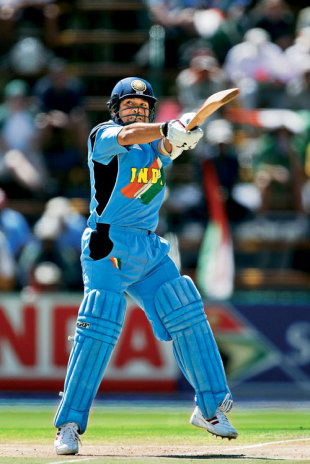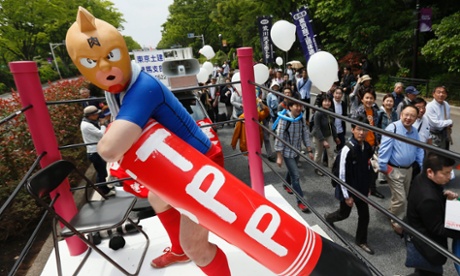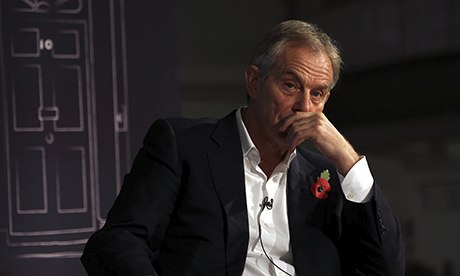Tendulkar has become a national symbol of optimism and pride but when he bats, we still see him as an underdog

The airwaves fizz every time Tendulkar walks out to the middle © BCCI
For the past two decades, the fall of the second Indian wicket has created an unparalleled frenzy. This comes first from the crowds, who at once animate a mild sadness at the departure of one man and an unbridled joy at the entrance of another. In homes all around India, families alert one another to the moment and gather close to their television screens.
At the ground itself, the cameramen have switched their focus from the pitch to the Indian dressing room, where a small, strong man is reacting. Still sitting, he pulls on his arm guard and rubs his hands as if drying the palms. Before standing he puts the first batting glove on his right hand and then, as he rises to his feet, he carefully positions a protective helmet upon his head, eases the strap under his chin and tucks almost 3lbs of bat under his left arm. As he begins the walk to the middle he pulls on his right batting glove. He is now ready for the calling that has been his life.
Sachin Tendulkar is 40 years old. He first played for India when he was 16. He made a hundred for India when he was 17 years and 112 days old. He has made 51 Test hundreds and 49 one-day hundreds. He, along with his captain MS Dhoni and a couple of film stars, is the best known person in a land of more than a billion people. But even his recognisable peers do not carry the hopes of that nation each minute of every day. Tendulkar is a victim of himself and so powerful is the impact that adoring followers hyperventilate around him.
He is unarguably a great cricketer and a near-perfect ambassador for modern, progressive India. He likes popular music, clothes and cars, and he has worn jewellery. Yet he retains an old-fashioned perspective. His wife is a doctor, his children like cricket. The family takes holidays behind walls or disappears into cities on faraway continents. He is unfailingly polite, angelic almost. He is as much a part of the fabric of India as the Red Fort, the Pink Palace, the Maharajas, and Diwali. Indians like cricket but they truly love Sachin Tendulkar. He has been David to a thousand Goliaths. He may, or may not, be the second-finest batsman to have played the game. To many Indians, he is a god. Or God. And now he retires from the game that has defined him.
Twenty yards from the pavilion, he stretches his back and rocks his torso from side to side. He rolls his shoulders and swings his arms before linking his bat to his body with a series of left- and right-handed movements. He rehearses some strokes. The bat looks too big for his body. It always has. He twists his mouth and contorts his jaw. He squints and then opens his eyes, wide as they will, to the brighter light. He looks to the heavens, as if acknowledging a friend.
The television director brings the statistics of a life's work to the screen: 15,837 runs at an average of 53.87; 67 fifties, 51 hundreds; highest score 248 not out. The commentators talk lavishly of his achievements and of the legacy. The excitement is at fever pitch. The spectators stand and roar their appreciation. The airwaves fizz. The viewer feels a shiver through his spine.
“There is no single thing that can be attached to Tendulkar. You cannot say he has a style and he reveals little of his personality
Tendulkar takes guard, marking a line in the crease with a forceful rip of the spike in his shoe. I think back to Karachi in 1989 when he did this for the first time in a Test match. The attack against him was Imran Khan, Wasim Akram, Waqar Younis and Abdul Qadir. He may have never faced better. He looked boyish then because he was a boy. He still appears boyish now. In those days, he had set records at school, club and state level. India wondered if the kid could cut it. Now they know. In the fourth Test of that first series, Imran floored him with a short ball. Tendulkar refused the idea that he should retire hurt, dusted himself down and made a fifty. He may never have achieved more. But he did.
Now, in Kolkata, in the only innings of his 199th Test, he looks around the field. Is this for fielders or for gaps? He blocks convincingly off front foot and back. Then he drives Shane Shillingford through the gap at midwicket. The ball rolls over the boundary rope. Two balls later, he hits the same gap. The ball speeds over the same rope. The crowd goes apoplectic. He fiddles with his thigh pad, pushing one way and the other and then he squats, stretching out his groin, before repositioning his protective box and settling deliberately back into his stance. These fidgets, these idiosyncrasies, have never changed. Ball after ball, match after match, year after year they have remained the same. Plus ça change, plus c'est la même chose.
I think back to the catch at Lord's on his first tour of England. An athletic, running effort that hinted at real talent. I think of his match-saving hundred in the next Test, at Old Trafford, when, aged 17 years and 112 days, remember, he appeared to marshall his senior partner, Manoj Prabhakar. I think of the way in which hard-bitten Yorkshire embraced him as their first overseas cricketer. I think of his smile and of the sense of fun that burst from his youth.
Oddly, this makes me think of his bowling, which always looked like a release from the strain of true responsibility. I think that I remember him saving a match with the ball. I look it up. He did, using a quirky mix of swing and spin to restrict South Africa to just three runs when six were needed from the last over of the Hero Cup semi-final in Kolkata. Mohammad Azharuddin was his captain then.
Tendulkar plays quietly forward. It is an aesthetically pleasing push/punch. His hands hold the lower part of the bat handle, revealing the butt at the top of the grip to be covered by a different colour of rubber. In the push/punch the blade of the bat is exactly straight, showing its whole face to the bowler. It was ever thus.

A primeval instinct: the upper cut off Shoaib Akhtar in Centurion in the 2003 World Cup© Getty Images
He went to that first hundred at Old Trafford with a wonderful boundary past mid-off from his back foot. It is about the most difficult stroke there is and it is a Tendulkar trademark. That, the straight drive that misses leg stump at the non-striker's end, and any number off wristy leg-side moments that draw intakes of breath from opponent and audience alike. Then I think about theslaughter of Shoaib Akhtar during the 2003 World Cup in South Africa and the almost primeval approach to that innings that set him apart. Even Virender Sehwag has not played an innings of such brutality. Tendulkar has said that he was once like Sehwag. But we all run out of years.
He dips at the knees in that squat once more, shuffles his box and settles into another perfect stance. Side-on, eyes level, bat tucked behind the right foot. He watches the ball closely of course, a prerequisite of good batting, and has uncanny balance in all his strokes. I think of the systematic attack on Shane Warne and the Australians in India in 1998 - pre-planned, well practised and brilliantly executed - a performance of which Ian Healy said: "Bradman must have been good if he was better than him." I think of the double-hundred in Sydney - a considered and controlled performance that came from a chronic elbow injury and the desire to succeed in spite of it.
A tweet from Brian Lara flashes across the screen: "The only man I would pay money to watch," says Lara of his old adversary. Was one a better batsman than the other? Perhaps the West Indian was the greater match-winner; the Indian, the greater technician. I think of two innings at the Kensington Oval in Barbados. Lara'sunbeaten 153 to outwit the Australians and Tendulkar's 92 on a really bad pitch, a dangerous pitch (one of the few on that fine field) against Curtly Ambrose and Ian Bishop. The most revered right- and left-handed batsmen of the age. I imagine them at the wicket together, a kind of nirvana.
The age of Tendulkar has seen five unarguably great batsmen. Lara had an arrogance, Viv Richards an aura. For Jacques Kallis' statesman think Ricky Ponting's streetfighter. But there is no single thing that can be attached to Tendulkar. You cannot say he has a style and he reveals little of his personality. Perhaps this is a conscious approach, designed to give the opponent no clue. Summarising his emotion is impossible, he doesn't do drama. If anything there is sense of vulnerability that makes him attractive. We still see him as the underdog, and this a man who has become a national symbol of optimism and pride.
Now he is in his stance again. Shillingford rolls in and delivers the doosra. It beats our hero on the back foot and hits him around the upper thigh. Shillingford and other West Indians appeal ferociously. The English umpire, Nigel Llong, gives it out. Ye gods, Nigel, what were you thinking!
My mind goes to Cape Town in 1997 and the post-lunch partnership with Azharuddin. I have never seen such batting. Nor, one suspects, had President Mandela, who had come to say hello. Of the first 12 balls of the session, 11 were hit for four or six. In 40 overs they put on 222. It took a remarkable catch to finish Tendulkar at 169. I was as disappointed then with the man who took the catch, Adam Bacher, as I am now with Umpire Llong. (Editor's note - I have always felt that batting was never better as in the Cape Town partnership.)
I stay in a Cape Town sort of mind for the innings less than three years back, when a spiteful pitch encouraged Dale Steyn and company. I asked Sachin about this and he rated the 146 that day among the best. I asked if the standard of bowling had diminished during his time in the game and he thought it had changed in method rather than quality. The bowlers defend better than earlier, thus his own game has retreated from aspiration towards attrition.
I recall Perth in 1992, when the free-thinking 18-year-old model flayed Merv Hughes and Craig McDermott on the world's fastest pitch. Incidentally, he thinks Steyn is as good as anyone, which, given a list that begins with Imran and incorporates Malcolm Marshall, Wasim Akram and Allan Donald, is high praise.
The crowd reacts with shock to Llong's decision. Tendulkar appears resigned to the moment, as if he has seen it before. The DRS would have saved him but he and colleagues have not supported it. With typical dignity he begins the long walk to the dressing room. The crowd rise to applaud, more than aware of the dying light. It is hard to be sure when greatness slipped away from Tendulkar but the World Cup win in 2011 seemed to provide the perfect final chapter to an extraordinary story. He chose to write an epilogue but it has lacked the possibilities of the previous narrative.
Suddenly he has gone from view. As he will next Monday, for ever. A piece of us goes with him. I have seen, either live or on television, every one of the innings remembered here and many more. Each of his journeys to the wicket has led to a nervous excitement and each performance has given immense pleasure. India's most precious son has been a gift to the rest of the world too.




